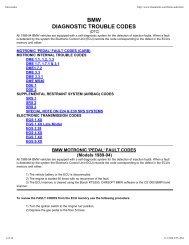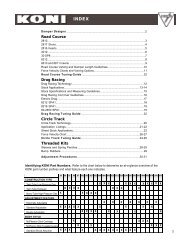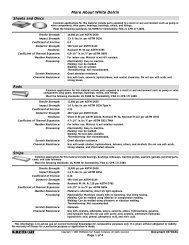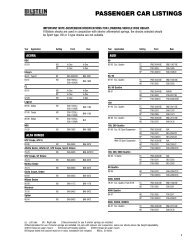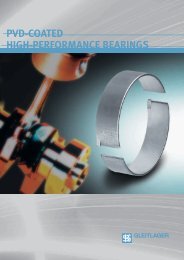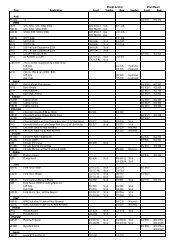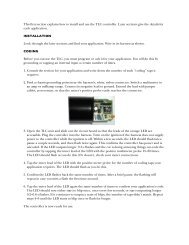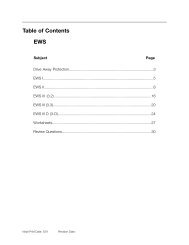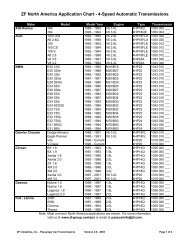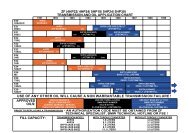Table Of Contents
Table Of Contents
Table Of Contents
Create successful ePaper yourself
Turn your PDF publications into a flip-book with our unique Google optimized e-Paper software.
Misfire Detection is part of the OBD II regulations the ECM must determine misfire and<br />
also identify the specific cylinder(s), the severity of the misfire and whether it is emissions<br />
relevant or catalyst damaging based on monitoring crankshaft acceleration.<br />
Emission Increase:<br />
• Within an interval of 1000 crankshaft revolutions, the ECM adds the the detected misfire<br />
events for each cylinder. If the sum of all cylinder misfire incidents exceeds the predeter<br />
mined value, a fault code will be stored.<br />
• If more than one cylinder is misfiring, all misfiring cylinders will be specified and the indi<br />
vidual fault codes for all misfiring cylinders and for multiple cylinder will be stored.<br />
Catalyst Damage:<br />
• Within an interval of 200 crankshaft revolutions the detected number of misfiring events<br />
is calculated for each cylinder. The ECM monitors this based on load/rpm. If the sum of<br />
cylinder misfire incidents exceeds a predetermined value, a fault code is stored and the<br />
“Malfunction Indicator Light” will be illuminated.<br />
If the cylinder misfire count exceeds the predetermined threshold the ECM will take the<br />
following measures:<br />
• The oxygen sensor control will<br />
be switched to open loop.<br />
• The cylinder selective fault code<br />
is stored.<br />
• If more than one cylinder is mis<br />
firing the fault code for all indi<br />
vidual cylinders and for multiple<br />
cylinders will be stored.<br />
• The fuel injector to the respec<br />
tive cylinder(s) is deactivated.<br />
78<br />
MS S54 Emissions Management



